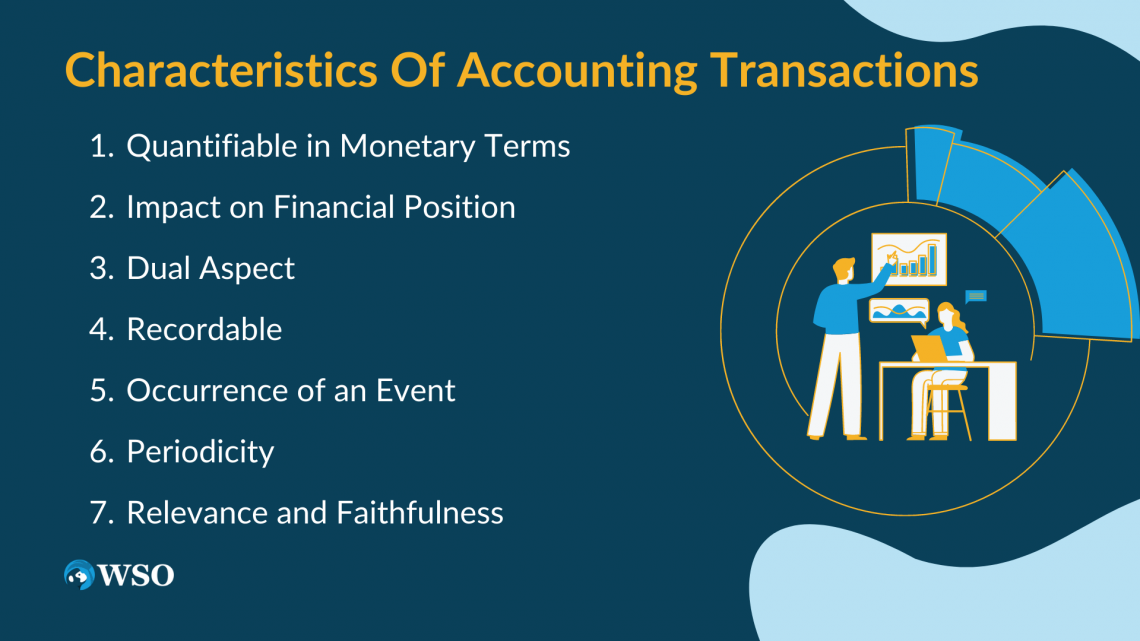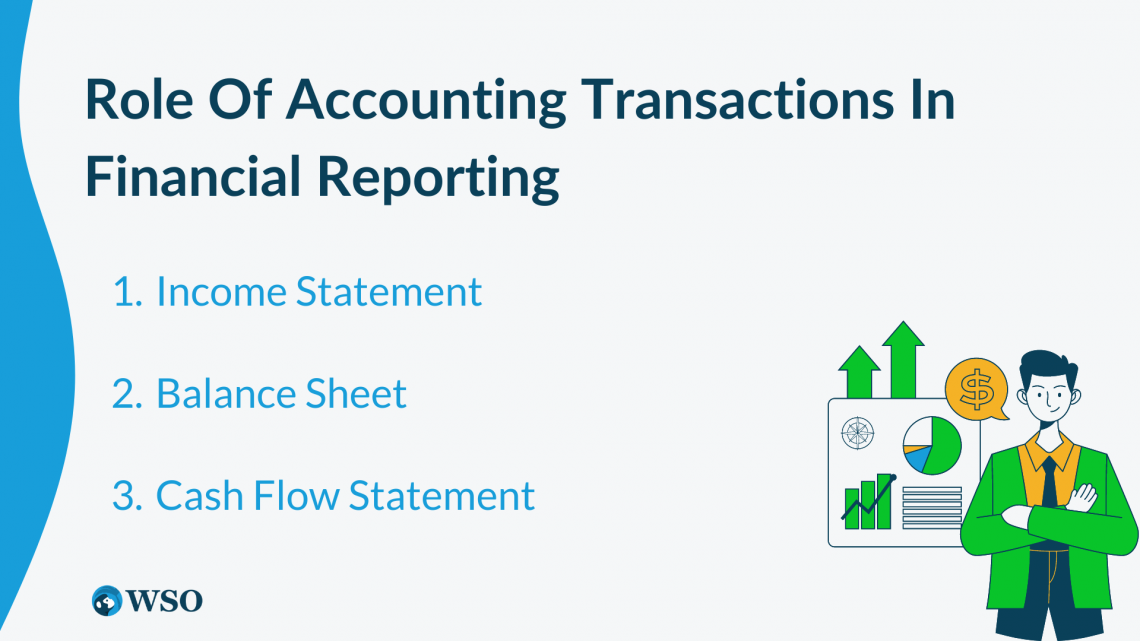Accounting Transactions
Accounting transactions are the backbone of financial reporting and involve an exchange of value that impacts a company's financial status.
What are Accounting Transactions?
Accounting transactions are economic events that influence a business's financial position and must be recorded in the company's books of accounts. These transactions can be simple, like selling to a customer, or complex, like initiating a long-term investment project.

Each transaction carries an equal and opposite effect, adhering to the principle of double-entry bookkeeping.
These transactions typically involve company assets, liabilities, or equity changes. Assets can be anything from cash to inventory or equipment. Liabilities represent the company's debts, while equity reflects the owner's investment in the business.
Accounting transactions are not just about money changing hands. They also include non-cash transactions, such as the depreciation of an asset, accrual of interest expenses, or adjustments for prepaid expenses.
Though not immediately involving cash, these transactions significantly impact a company's financial health.

A key role of these transactions is in preparing financial statements - the balance sheet, income statement, and cash flow statement.
By correctly recording and classifying these transactions, businesses can accurately track their income and expenses, assets and liabilities, and cash inflows and outflows, ultimately guiding decision-making and strategy.
Furthermore, they ensure legal compliance and provide transparency to stakeholders.
Key Takeaways
- Accounting transactions are the backbone of financial reporting and involve an exchange of value that impacts a company's financial status.
- Transactions can be internal or external, cash or non-cash, and involve asset, liability, or equity changes.
- All transactions must be quantifiable, have a dual aspect per the double-entry bookkeeping system, be supported by documentation, and occur within a specific period.
- There are several types of transactions: Revenue, Expense, Assets and Liabilities, Equity, Internal, External, Cash, and Non-Cash transactions, each with specific rules for recording.
- These transactions significantly influence the financial statements - Income Statement, Balance Sheet, and Cash Flow Statement, providing an accurate picture of a company's financial health.
- Proper recording and analyzing of accounting transactions guide decision-making, ensure legal compliance, and offer transparency to stakeholders.
- Each transaction type carries distinct implications for the financial status of a company, from managing cash flow to determining profitability.
Understanding Accounting Transactions
Accounting transactions are economic events impacting a company's financial state, requiring recording in the ledger via a double-entry bookkeeping system. They're classified into Revenue and Capital transactions.

Revenue transactions affect a company's assets or liabilities, resulting in an equity change. In contrast, Capital transactions alter the sources of finance, modifying the owner's equity.
Transactions may be external, involving outside parties like customers or suppliers, or internal, occurring within the business. They can also be cash or non-cash, depending on whether cash is received or paid instantly.
These transactions form the basis for the Income Statement, Balance Sheet, and Cash Flow Statement, which are crucial for demonstrating a company's financial health.
By recording and analyzing these transactions, accountants can accurately portray the company's financial status, aiding decision-making and meeting legal requirements.
Characteristics Of Accounting Transactions
Accounting transactions involve an exchange of value. For example, purchasing raw materials involves transferring cash from the company to the supplier in exchange for goods.

1. Quantifiable in Monetary Terms
All transactions need to be quantifiable in monetary terms. For instance, the effort put in by an employee hasn't been considered an accounting transaction until it is quantified as wages or salary.
2. Impact on Financial Position
Every accounting transaction affects at least two aspects of the company's financial position. This is based on the double-entry bookkeeping system.
3. Dual Aspect
An essential characteristic of accounting transactions is their dual nature. The double-entry bookkeeping system means every transaction impacts at least two accounts - a debit and a corresponding credit.
Example
If a business purchases equipment for cash, it increases the equipment account (an asset) and decreases the cash account (another asset).
4. Recordable
Transactions must be recordable, meaning sufficient documentation must support the transaction. For example, sales invoices, receipts, bank statements, or contracts.
These documents offer proof of the transaction and provide reference points for review or audit.
5. Occurrence of an Event
An accounting transaction is recognized when an economic event occurs, such as the sale or purchase of goods or services.
Note
Predicted or planned transactions, like projected sales, are not recognized in the accounting books until they have actually occurred.
6. Periodicity
This characteristic pertains to documenting accounting transactions when they transpire, irrespective of when the actual cash inflow or outflow occurs.
This aligns with the accrual accounting concept, ensuring revenues and expenses match the appropriate accounting period.
7. Relevance and Faithfulness
For a transaction to be recorded, it must be relevant to understanding a business's financial position and faithfully represent the economic conditions and events it purports to represent.
For example, the recording of a sales transaction should accurately reflect the amount and timing of the revenue generated.
Types Of Accounting Transactions
There are various types of accounting transactions that businesses record. Each transaction type has specific rules for recording in the company's books.

1. Revenue Transactions
Revenue transactions involve inflows of cash or receivables from selling goods or services. These may include sales revenue, interest revenue, and dividend income.
2. Expense Transactions
Expense transactions are outflows of resources associated with generating revenue. This might include the cost of goods sold, rent, salaries, and depreciation expenses.
3. Assets and Liabilities Transactions
Asset transactions involve changes to a company's assets, like purchasing or disposing of property, plant, and equipment. Liabilities transactions involve changes to a company's liabilities, such as taking or repaying a loan.
4. Equity Transactions
Equity transactions encompass changes to the business's owner's or shareholders' equity. Examples include issuing shares, paying dividends, and recording profits or losses.
Note
Owner's contributions and withdrawals, such as additional investments or drawings, are also considered equity transactions.
5. Internal Transactions
Internal transactions occur within the business and don't involve external entities. These include depreciation of assets, adjustment of prepayments or accruals, and the writing off of bad debts.
While these transactions don't result in an immediate cash exchange, they significantly affect a company's financial position.
6. External Transactions
External transactions are business transactions involving an external party, such as customers, suppliers, or lenders.
Note
External Transactions include the sale of goods to customers, the purchase of supplies from vendors, or obtaining a loan from a bank.
7. Non-Cash Transactions
Non-cash transactions are those where cash doesn't change hands at the time of the event, like credit sales or purchases, depreciation, and accrued expenses or revenues.
Although not involving immediate cash flow, these transactions have significant implications on a company's financial position and future cash flows.
8. Cash Transactions
Cash transactions involve immediate payment or receipt of cash. These include cash sales, cash purchases, receipt of cash from debtors, or payment of cash to creditors, and are crucial for managing a company's liquidity.
Role Of Accounting Transactions In Financial Reporting
Accounting transactions are the basic building blocks of financial reporting. The accurate recording, classification, and summarization of these transactions lead to preparing financial statements that provide important information about a company's financial health.

1. Income Statement
The income statement, also known as the profit and loss statement, summarizes a company's income and expenditures over a designated time frame, showcasing the company's profit-making performance. It is in this statement that transactions related to earnings and costs are recorded.
2. Balance Sheet
The balance sheet shows a company's financial position at a specific point in time. It presents the company's assets, liabilities, and shareholders' equity, which are directly influenced by asset and liability transactions.
3. Cash Flow Statement
The cash flow statement offers a snapshot of a company's cash receipts and payments over a particular time frame.
Note
The Cash Flow Statement concentrates on transactions impacting cash balances, and it organizes these into three distinct sections: operations, investments, and financing activities.
Accounting transactions are the essential gears that drive a company's financial machinery, impacting its overall economic health and condition.
They embody the exchange of value in various forms—cash, non-cash, internal, and external, encompassing revenue, expenses, assets, liabilities, and equity.
These transactions, each carrying distinct implications, must adhere to the principles of double-entry bookkeeping, be quantifiable, recordable, and occur within a specified period.




or Want to Sign up with your social account?